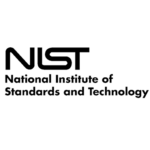Drug discovery and development is a complex, multifaceted process that can be challenging to navigate. The primary goal is to ensure that new therapies are safe and effective for patient use. The process includes several critical stages, each governed by strict regulatory oversight to safeguard public health. At the heart of drug development are two pivotal applications: the Investigational New Drug (IND) application and the New Drug Application (NDA).
The IND and NDA stages are critical milestones in drug development because they guide a drug candidate from preclinical studies to clinical trials and, ultimately, to market approval. They are indeed different applications, and drug developers and sponsors must understand which application requires which data and when.
Here, we peel back the layers of these complex processes, offering insight into the strategies, hurdles, and scientific evaluations that underpin successful drug development. We explore the importance of pre-IND and INTERACT meetings to understand regulatory expectations. And we traverse the path from preclinical to clinical studies, highlighting the critical role of toxicology studies along the way. Our goal is to ensure drug sponsors understand how to keep compounds compliant and position them to meet patient needs.
Compiling a Thorough IND Submission
The IND application serves as the gateway to initiating clinical trials in humans. At the IND stage, no clinical data is available, so the focus is on compiling a comprehensive package of preclinical data to assure regulatory bodies of the drug’s potential safety profile. This package includes data on the drug’s pharmacology and toxicology profiles and any available chemistry, manufacturing, and controls (CMC) information. Multiple species are generally tested at this stage to provide this crucial data.
In the U.S., regulators review each IND application within 30 days. During this evaluation, regulators evaluate whether participants in early-stage clinical trials would be subjected to “unreasonable risk of significant illness or injury” and verify that the study is structured to achieve its goals. IND submissions that do not sufficiently substantiate safety can be subjected to a “clinical hold” pending a more detailed review.
According to the National Center of Biotechnology Information, U.S. regulators receive around 1,500 IND submissions annually. And while only a fraction of these submissions — just 9% between October 2020 and September 2021 — encounter a clinical hold, it does happen and can significantly disrupt a development program.
Timeline disruptions can be costly and frustrating, which is why U.S. regulators provide two different vehicles for drug sponsors to receive targeted feedback before they formally submit their IND applications.
- An INTERACT meeting, or INitial Targeted Engagement for Regulatory Advice on CBER/CDER ProducTs, is appropriate when a sponsor has pinpointed a drug candidate for clinical study evaluation and has undertaken initial preclinical proof-of-concept studies using the drug candidate. INTERACT meetings generally occur before embarking on toxicology studies.
- A pre-IND meeting is crucial for sponsors to gain insights and feedback on their drug development programs, especially when existing guidance documents and publicly accessible resources do not entirely address their inquiries. These meetings provide information that helps sponsors craft thorough IND applications that minimize the risk of a clinical hold. The main objective of such a meeting is to discuss and receive feedback on planning preclinical studies, designing the initial IND study, and the manufacturing and quality controls required to begin human trials. These meetings also provide a platform for regulators to explore study plans for pediatric populations, the envisioned product profile, the quality target product profile, the design and findings of any natural history studies, and the optimal strategy for data presentation and formatting within the IND submission.
Successfully navigating an IND application is critical for maintaining the development timeline and drugs designed to treat rare diseases or address urgent health crises where delays can have profound consequences. The IND submission seeks to demonstrate that initial human trials can be conducted safely, setting the stage for in-depth human studies. Put simply, the primary goal of an IND submission is to receive a regulatory ‘green light’ to administer an investigational drug or biological product to humans.
Moving From Preclinical to Clinical
Once a drug candidate’s IND application is approved, the drug moves into early-stage clinical trials. The transition from IND to NDA includes extensive clinical testing, where the drug is evaluated in progressively larger populations to gather definitive evidence of its effectiveness and to assess its safety further. The data from these trials provide the information regulators expect to see in an NDA submission. Specifically, early-stage clinical trials provide efficacy and safety results and the drug’s pharmacokinetic (PK), pharmacodynamic (PD), and optimal dosing strategies. These early trials are about proving the drug works in the intended population and ensuring it’s safe for broader use.
- Phase 1 trials are the first stage of human testing, focusing primarily on the drug’s safety, tolerability, PK and PD profiles. Conducted with a small group of 20-80 healthy volunteers or, in some instances, patients with the disease of interest, the primary goal is to identify the drug’s safe dosage range and understand its metabolic and pharmacological actions. This phase helps determine the drug’s absorption, distribution, metabolism, and excretion (ADME) characteristics and identifies the most common side effects associated with increasing doses.
- Phase 2 trials evaluate the drug’s efficacy in a larger group of patients (100-300 participants) who have the condition being treated. These randomized and well-controlled studies provide further safety data by identifying common short-term side effects and risks associated with the drug. Phase 2 aims to establish therapeutic efficacy and optimal dose range, setting the stage for a more extensive investigation in Phase 3.
- Phase 3 trials are large-scale, involving thousands of patients in clinics and hospitals where the drug is intended to be used. These studies assess the drug’s effectiveness, monitor its side effects, and compare it to established treatments. These trials essentially confirm the drug candidate’s therapeutic benefits, illuminate its risk-benefit profile in large patient populations, and determine the drug’s overall value in clinical practice. Phase 3 trials are the basis for NDA approval and provide strong indicators of market eligibility.
Once a drug candidate successfully passes its early clinical trials, drug sponsors shift their focus to preparing an NDA. Government data show that most drugs take around 10 years and hundreds of millions of dollars to reach this stage — and it is a critical one. It is the official step of seeking approval to market the drug.
An NDA submission requires a comprehensive data set, including detailed results from Phases 1, 2, and 3 clinical trials. It also includes proposed labeling and information on manufacturing processes and the drug’s shelf life. Once an NDA submission package is received, regulators have 60 days to reject or review it. Regulatory review of NDA packages can take as few as six months and as many as 15. The length of time depends on the size of the package, the quality of the data, the drug’s intent, and a thorough examination of the drug’s benefit to patients in real-world settings.
The Role of Toxicology Studies
Toxicology studies are indispensable in IND and NDA submissions as they are the cornerstone for understanding a drug’s safety profile. These studies support the initial IND submission by ensuring that the drug is unlikely to cause significant harm in initial human trials. And as development progresses, the scope of toxicology studies expands to cover long-term effects, reproductive toxicity, and carcinogenicity, crucial for initiating the large-scale clinical trials required by the NDA’s comprehensive safety evaluation.
This information ensures that the drug’s benefits outweigh its potential risks for patients. A comprehensive safety profile also helps identify potentially adverse effects, details the conditions under which the drug can be used safely, and informs dosing recommendations. This is critical to protect patients from undue harm, optimize therapeutic outcomes, and guide healthcare professionals in making informed decisions.
The bottom line is that drug development is wrought with uncertainty. The path from concept to market is littered with compounds that failed to demonstrate sufficient efficacy or safety. This underscores the importance of robust planning and understanding of scientific and regulatory landscapes. Drug sponsors that lack the appropriate toxicological experience in-house should consider engaging a trusted lab partner. There is too much at stake to overlook this crucial data.
A Final Thought
Navigating IND and NDA submissions while keeping your drug development timeline intact and on-budget is a strategic journey. Success requires more than just a passion for doing good and a staff of innovative scientists. It demands a deep understanding of regulatory complexities and an ability to adapt to evolving trends. One such trend is the growing significance of personalized medicine and targeted therapies.
Regulatory bodies are beginning to focus more on patient-centric outcomes and real-world evidence, which will require sponsors to adapt their approaches to IND and NDA submissions. This trend will require a flexible and informed approach to drug development, ensuring that new therapies meet regulatory standards and address unmet medical needs.







